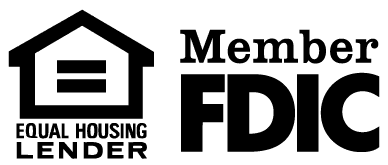In just five minutes, you can determine your 2023 eligibility for financial opportunities by following a concise checklist. Start by examining your credit score, confirming it mirrors a solid payment history, and keeping credit utilization below 30%. Next, gather essential documents like pay stubs and tax returns. But there’s more to take into account. Is your employment history stable enough? And what about your debt-to-income ratio? These factors play a significant role. Ready to boost your financial standing? Uncover the details that could make all the difference in your next application. What’s the next step to guarantee your readiness?
Credit Score Standards
When it comes to securing loans or credit cards, understanding credit score standards is vital. Your credit score is a numerical representation of your creditworthiness, and lenders use it to evaluate the risks of lending to you. To guarantee you meet these standards, it’s imperative to grasp the credit score factors that influence it and how they affect your financial decisions.
First, know that credit score factors include payment history, amounts owed, length of credit history, new credit, and credit mix. Payment history is the most significant, as it reflects your reliability in paying bills on time.
Meanwhile, credit utilization is the ratio of your current credit card balances to your credit limits. Keeping this ratio below 30% can positively impact your score, showing lenders that you’re not over-reliant on credit.
Understanding these aspects helps you maintain a healthy credit score, making you more attractive to lenders. Regularly monitor your credit report and address any discrepancies to safeguard your score.
Income Verification
Often, income verification is an essential step in the loan or credit card application process. Lenders want to guarantee you have the financial means to repay the borrowed amount.
To get started, gather documentation that clearly outlines your income sources. These could include pay stubs, tax returns, or bank statements. It’s important to provide accurate and up-to-date information for a smooth verification process.
There are various verification methods lenders might use to confirm your income. They could directly contact your employer for confirmation or request you to provide official income documents.
Some lenders even use third-party services that securely and efficiently verify your income without additional hassle. Make sure you’re prepared for any of these methods by organizing your documents in advance.
When you understand your income sources and how they align with your lender’s verification methods, you’ll be better positioned to meet eligibility requirements.
This preparation not only speeds up the process but also enhances your credibility as a borrower. Remember, thorough and accurate income verification can make a significant difference in the outcome of your application, so take it seriously and be prepared.
Employment History
Your employment history plays an essential role in determining your eligibility for loans and credit cards. Lenders look at your work record to verify you have a stable source of income. They want to know you’re capable of making consistent payments. Employment verification is a key step in this process, as it confirms the details you provide on your application.
Whether you’re a salaried employee or self-employed, you’ll need to furnish proof of your employment status.
Job gaps can raise red flags for lenders, so it’s important to address these proactively. If there are periods where you weren’t working, be prepared to explain the reasons. Perhaps you took time off for further education, to travel, or due to personal reasons. Whatever the case, having a clear and honest explanation can ease lender concerns.
To streamline the verification process, gather documents like pay stubs, tax returns, or letters from your employer. This preparation not only helps you but also speeds up the approval process.
Debt-to-Income Ratio
While employment history is a critical component in evaluating loan eligibility, lenders also focus on your debt-to-income (DTI) ratio. This percentage compares your monthly debt payments to your monthly gross income. A lower DTI ratio indicates better debt management, which makes you more attractive to lenders. They see it as a sign that you’re not overextending yourself financially and that you have room to take on additional debt responsibly.
To calculate your DTI, sum up your monthly debt obligations, including mortgages, car loans, and credit card payments. Divide this total by your gross monthly income. A DTI ratio below 36% is generally considered favorable, though some lenders may accept a slightly higher ratio, especially if you have strong credit and a stable income.
Improving your DTI ratio involves effective financial planning. You can achieve this by reducing existing debt, increasing your income, or a combination of both. Paying down high-interest debt and avoiding new debt can considerably lower your DTI ratio.
Required Documentation
When applying for a loan, assembling the right documentation can make the process smoother and increase your chances of approval.
You’ll want to verify you’ve got all your paperwork in order before diving into the application process. Missing documents can slow things down or even halt your progress.
So, let’s break down the essential document types you should gather.
First, you’ll need proof of identity, such as a driver’s license or passport. This verifies who you’re and is non-negotiable in most cases.
Next, prepare your income documentation. Recent pay stubs, W-2 forms, or tax returns are typically required to demonstrate your financial situation and help lenders assess your ability to repay the loan.
Don’t forget to include your credit report. This gives lenders insights into your credit history and current debts, playing a vital role in their decision-making.
Additionally, if you’re self-employed, you might need to provide additional documents like profit and loss statements.
Lastly, gather any asset documentation, including bank statements or property deeds. These provide a fuller picture of your financial health.
Frequently Asked Questions
How Does My Age Affect My Eligibility for a Loan?
Your age can considerably impact your loan eligibility.
Lenders often have age limits, meaning you must be at least 18 to apply. Some financial institutions might also have upper age limits.
Additionally, your age can influence loan terms, as younger borrowers might qualify for longer repayment periods. Older applicants may face shorter terms or stricter conditions.
Always check with lenders to understand how age affects your specific loan options.
Can I Qualify With a Co-Signer if I Have Bad Credit?
You’re wondering if a co-signer can help you qualify for a loan with bad credit. Yes, they can!
A co-signer provides benefits by vouching for your reliability, improving your chances of loan approval. Their good credit mitigates your credit risk, potentially leading to better loan terms.
Plus, timely payments on this loan can contribute to your credit improvement over time, helping you build a better financial future.
Does Having a Criminal Record Impact My Eligibility for a Mortgage?
Having a criminal record can impact your mortgage options, but it doesn’t automatically disqualify you.
Lenders primarily focus on your credit score, income, and financial history, but some may consider your criminal background.
It’s essential to be transparent about your situation.
Consider lenders with more flexible criteria or seek specialized programs.
A solid employment record and good credit can improve your chances, so make sure you’re prepared before applying.
What Role Does My Savings Account Play in the Approval Process?
Your savings account plays an essential role in the mortgage approval process.
Lenders look for financial stability, and having a healthy savings account can demonstrate your ability to manage finances responsibly. It shows you’re prepared for unexpected expenses and can cover the down payment.
A strong savings account may also improve your approval chances by reducing perceived risk, making you a more attractive borrower to lenders.
Are There Any Special Programs for First-Time Homebuyers in 2023?
You’re probably wondering about special programs for first-time homebuyers in 2023. Yes, there are incentives designed just for you.
These programs often provide loan assistance, making it easier to secure your first home. They can include lower down payments or reduced interest rates, helping you manage costs.
Don’t hesitate to explore your options; taking advantage of these first-time incentives can be a game-changer in your homebuying journey.
Conclusion
You’ve got what it takes to boost your loan or credit application. Start by ensuring your credit score’s in good shape, with a healthy payment history and low credit utilization. Gather your pay stubs, tax returns, and ID for income verification. Show your stable employment history, and make sure your debt-to-income ratio stays below 36%. With these steps, you’re ready to confidently present your application, increasing your chances of success.




